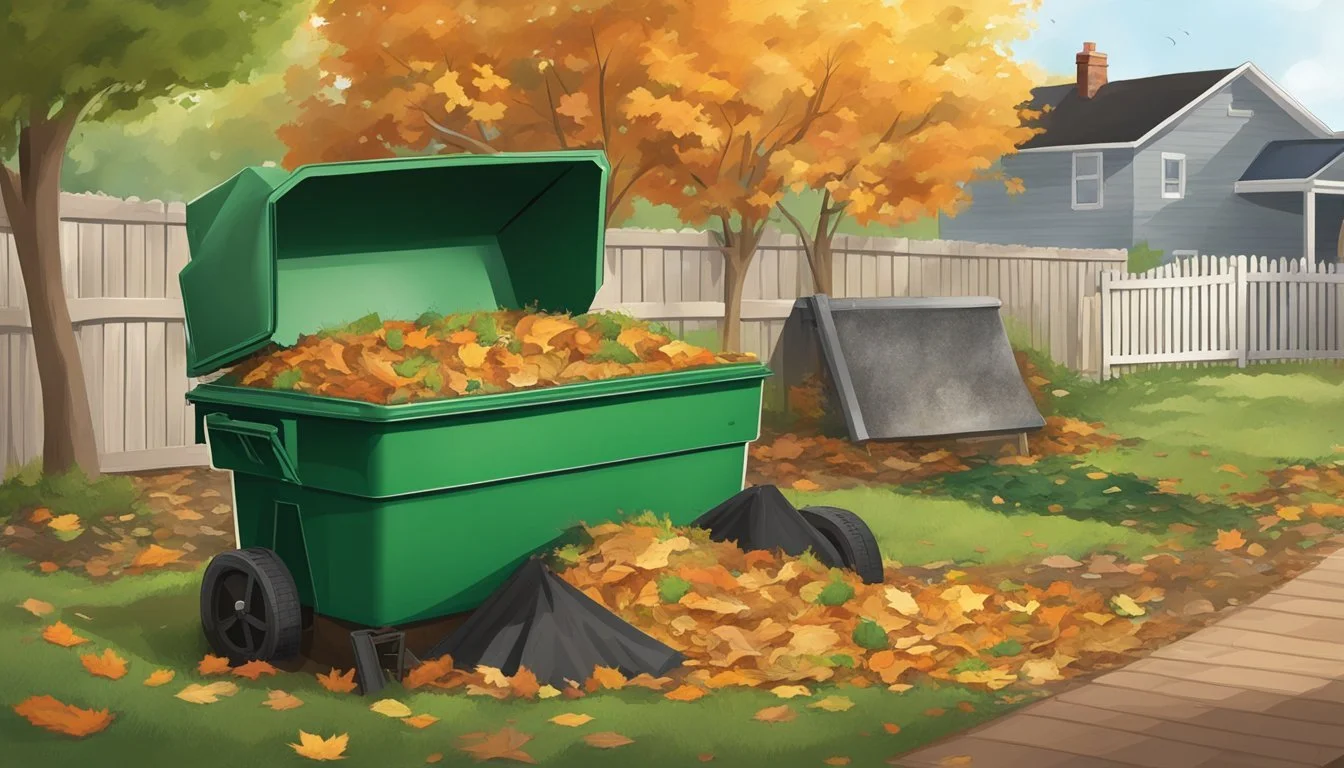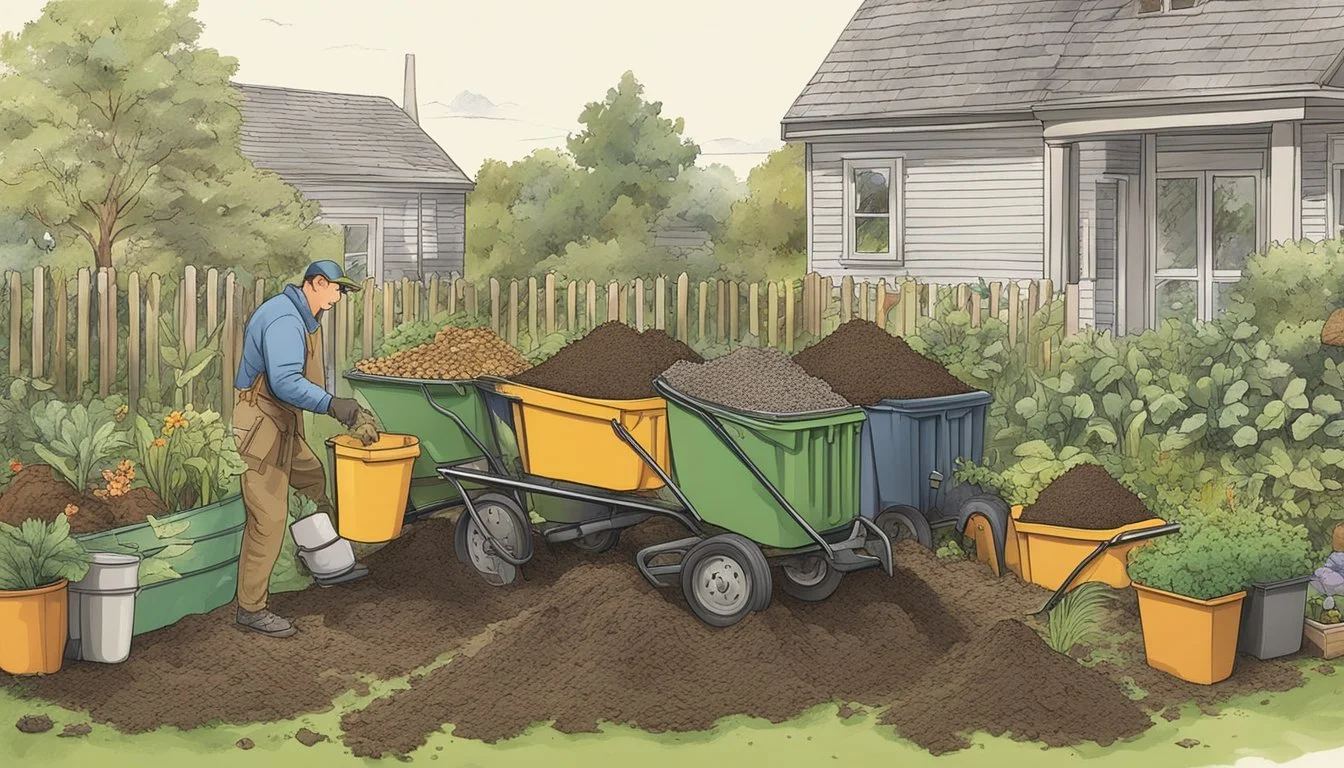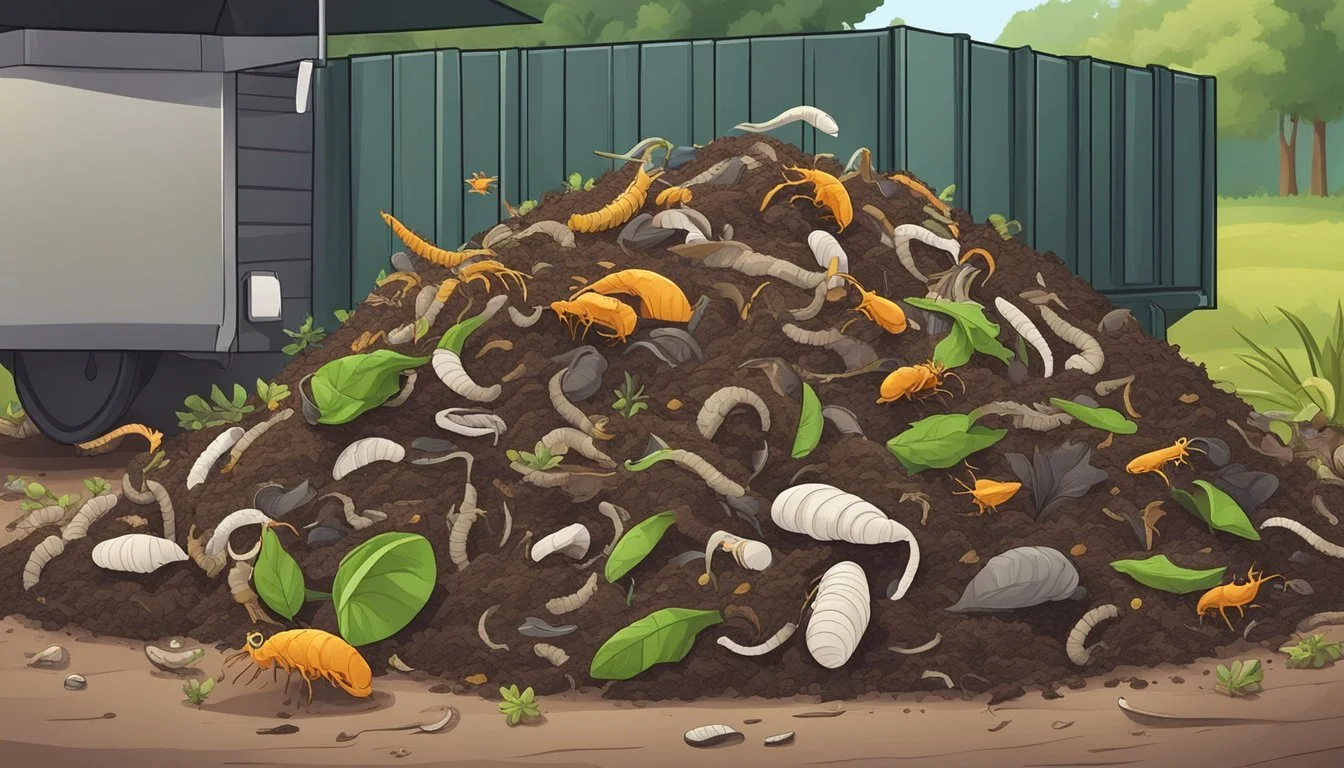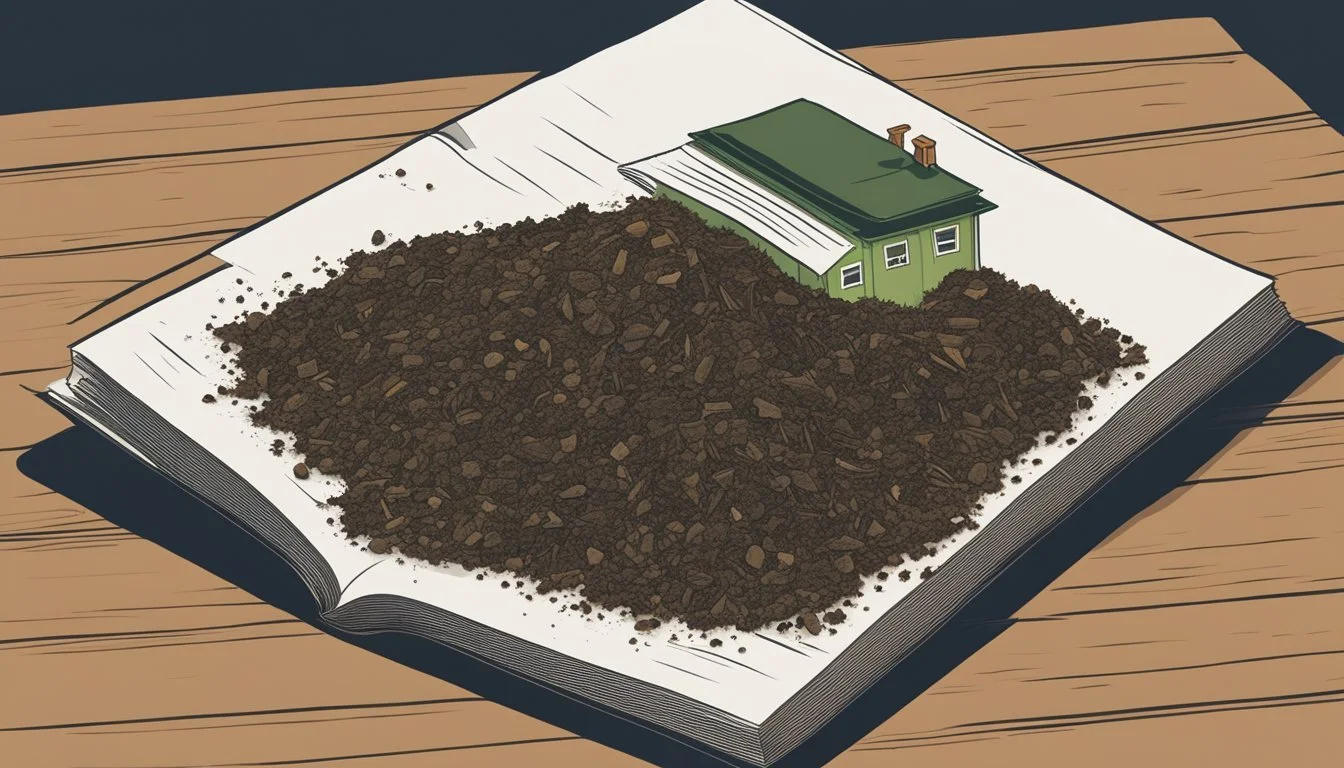Guide to Composting in Springfield, IL
Optimize Your Waste Management Practices
The city of Springfield, IL, recognises the value of composting as a tool to enrich local soil while also managing waste more sustainably. Composting is the natural process of recycling decomposed organic matter such as leaves, garden waste, and kitchen scraps into a valuable amendment for soil. In Springfield, this practice not only helps reduce the amount of waste sent to landfills but also improves the quality of soil for gardening, landscaping, and agriculture.
By converting organic matter into compost, Springfield residents can contribute to creating a more regenerative community. The Springfield compost collective provides insight into how much waste can be diverted from the landfill through effective composting strategies. Compost adds important nutrients back into the soil, promoting healthier plant growth and contributing to the sustainability and beauty of Springfield's green spaces.
To cater to various needs, Springfield offers different composting methods, such as backyard bins and local collection programs. Whether it's managing yard trimmings or kitchen scraps, understanding composting basics can greatly benefit residents and the environment. State resources such as Illinois' composting guidelines are available to help individuals make informed decisions about composting at home. Through these efforts, Springfield is taking significant steps towards waste reduction and environmental stewardship.
Basics of Composting
In Springfield, IL, understanding the fundamentals of composting is crucial. This section hones in on what composting entails, its environmental and garden benefits, and the core components required for successful composting.
What is Composting?
Composting is a natural process involving the decomposition of organic materials. By combining green and brown matter, it efficiently recycles various organic substances, including kitchen scraps and yard waste, turning them into a rich soil amendment known as compost.
Benefits of Composting
Composting provides a plethora of benefits. It enriches the soil, helping to retain moisture and suppress plant diseases and pests. More than just a soil amendment, it reduces the need for chemical fertilizers and encourages the production of beneficial bacteria and fungi that break down organic matter to create humus, a nutrient-filled material.
Components of a Good Compost
A successful compost requires a balance of the following elements:
Greens: These are nitrogen-rich materials, such as vegetable waste, fruit scraps, and coffee grounds.
Browns: Materials high in carbon such as leaves, straw, and cardboard.
Moisture: Adequate water is vital for the composting process, maintaining the material's moisture at a level similar to a wrung-out sponge.
Air: Oxygen is necessary for aerobic decomposition, and regularly turning the compost helps introduce air into the pile.
Each component plays a significant role in breaking down organic material into beneficial nutrients that enhance soil quality and plant growth.
Setting Up Your Compost Bin
Proper setup of a compost bin is crucial for efficient composting. Attention to selection, location, and maintenance ensures successful transformation of organic waste into valuable compost.
Choosing the Right Bin
When selecting a compost bin, one should consider the size of their garden and the amount of organic waste typically produced. Bins come in various forms, from simple enclosures to sophisticated tumblers. A worm compost bin is a good option for individuals looking to expedite the composting process using red wrigglers. It is essential to choose a bin that allows for easy addition of waste and removal of finished compost.
Ideal Location for Bin Placement
The location of your compost bin can significantly impact its efficiency. Place the bin on a level, well-drained area to prevent waterlogging. Ensure it is partially shaded to protect from excessive heat while maintaining enough warmth for decomposition. Accessibility year-round is also important for continual maintenance.
Maintaining Your Compost Bin
Maintenance is vital to producing high-quality compost. A healthy compost bin should contain a mix of green (nitrogen-rich) and brown (carbon-rich) materials, with a ratio close to 1:2. Regular turning of the compost helps aerate the pile and speeds up the decomposition process. Moisture levels should be monitored; the compost should feel like a wrung-out sponge. If the compost is too dry, decomposition slows; if too wet, it can become anaerobic. Keep an eye on the material's temperature as well, which can indicate the activity level of the decomposition process.
Selecting Your Composting Materials
Selecting the right balance of composting materials is essential for crafting a productive compost pile. One must be mindful of the carbon to nitrogen ratio and differentiate between compostable materials and those to exclude.
Greens and Browns: Balancing Nitrogen and Carbon
To maintain a healthy compost system, a balance between "greens" and "browns" is necessary. Greens are rich in nitrogen, vital for compost microbes' growth and function, and include kitchen scraps like fruit and vegetable peels. Browns provide carbon, which fuels the energy these microbes need, and consist of materials such as dry leaves, straw, and sawdust. A general rule for balancing these materials is to aim for a ratio of about one-third greens to two-thirds browns.
Greens for Nitrogen Browns for Carbon Fruit and vegetable scraps Dry leaves Coffee grounds Cardboard (shredded) Fresh grass clippings Straw or hay Plant trimmings Sawdust
Materials to Include
When sourcing materials for a compost pile, it is important they focus on organic materials that break down effectively. These include:
Kitchen scraps: Fruit and vegetable peels, coffee grounds, and eggshells.
Yard waste: Grass clippings, plant trimmings, and leaves.
Always ensure that yard waste like grass clippings is free of pesticides to avoid contaminating the compost.
Materials to Avoid
Not all organic materials are suitable for composting, especially when it comes to mitigating odors and pest attraction. They should avoid:
Meat, fish, and dairy products
Fats, oils, and grease
Diseased plants
Pet wastes
Inclusion of these items can lead to a smelly compost pile and may attract rodents and other pests.
The Composting Process
The composting process is an orchestrated interaction of organic matter, microorganisms, water, and air. Proper management of these components facilitates the breakdown of yard and kitchen waste into beneficial compost.
Stages of Composting
Composting occurs in four primary stages: the mesophilic, initial stage where microorganisms break down the organic material, generating heat. This leads to the thermophilic stage, where temperatures can reach between 104°F to 160°F, killing pathogens and weed seeds. As the cooling stage commences, the decomposing matter starts to stabilize. Finally, during the curing or maturation stage, the compost becomes fully stabilized and ready for use, which might take several months.
Hot vs. Cold Composting
Hot composting is a fast method that rapidly breaks down organic matter at temperatures between 104°F to 160°F. It requires regular turning to maintain oxygen levels and might yield compost within a month. Cold composting, on the other hand, occurs at lower temperatures and typically involves less maintenance, but requires a longer period, often over a year, to produce usable compost.
Aeration and Moisture Control
Aeration is crucial for maintaining oxygen levels essential for aerobic decomposition. Turning the compost pile introduces air and prevents anaerobic conditions, which can slow down the process and cause odor problems. Moisture content should be kept at an optimal 40%-60% range, akin to a wrung-out sponge, to support microbial activity without creating waterlogged conditions.
Using Worms for Vermicomposting
Vermicomposting harnesses the natural process of decomposition using earthworms to convert organic waste into nutrient-rich compost. This section provides information on the benefits of vermicomposting, how to set up a worm bin, and the care and maintenance required to manage a successful worm composting system.
Benefits of Vermicomposting
Vermicomposting offers an efficient way to reduce household waste and enhance garden soil. It employs various species of worms, like the red wiggler, to break down organic matter. The byproduct of this process, commonly known as worm castings, is a potent organic fertilizer that is rich in nutrients such as nitrogen, phosphorus, and potassium. The method is also considered faster than traditional composting, transforming kitchen scraps into compost within only a few months.
Setting Up a Worm Bin
To start vermicomposting, one needs an opaque container with a lid to create a dark environment that worms favor. Selecting a deep bin enhances the process by allowing more room for layering and burying fresh material. The container should have adequate holes for aeration. Inside the bin, one layers shredded paper or cardboard, moistened to create bedding for the worms, before adding food waste and the worms themselves.
Care and Maintenance of Worm Bins
Maintaining a worm bin requires regular monitoring to ensure it remains a conducive environment for the worms. The temperature inside the bin should be kept between 55 and 77 degrees Fahrenheit for the worms' optimum happiness. Feeding should be done with suitable scraps while avoiding materials harmful to worms like citrus and spicy foods. (What wine goes well with spicy food?) Proper maintenance helps prevent common issues such as odors and pests, ensuring a clean and efficient vermicomposting process.
Troubleshooting Common Issues
When maintaining a compost pile, Springfield residents may encounter a few common issues. This section aims to provide solutions for odor management, pest control, and assessing compost pile health to ensure efficient and trouble-free composting.
Odor Management
A well-maintained compost pile should emit a pleasant, earthy smell. Odor issues usually stem from an imbalance in the carbon-to-nitrogen ratio or a lack of aeration. To address bad smells, adjust the carbon-to-nitrogen ratio to the optimal range of 25-30:1 by adding more brown materials, such as dry leaves or paper, if the pile is too wet and smelly, signifying an excess of nitrogen. For insufficient airflow, turn the pile to introduce oxygen, which helps break down materials more efficiently and reduces odors Composting Troubleshooting: Common Issues and Solutions.
Pest Control
Pests are attracted to open compost heaps, especially if kitchen scraps are readily accessible. Rodents and insects can become an issue if precautionary steps are not taken. To deter these unwanted visitors, always cover fresh kitchen scraps with a layer of brown material. Using a compost bin with a secure lid or a tumbler can also provide an effective barrier against pests. If pests persist, consider adding wire mesh around the base of the pile. Furthermore, avoid adding materials that are likely to attract pests, such as meat, dairy, or oily foods, which can also help prevent the proliferation of disease-causing organisms Troubleshooting Composting Problems | Illinois Extension | UIUC.
Compost Pile Health Check
To ensure a healthy composting process, it is essential to monitor the compost pile regularly for moisture balance and heat regulation. A compost pile that is too small may not heat up efficiently, hindering decomposition. If the pile feels cold, adding more "green" materials rich in nitrogen, like vegetable scraps or grass clippings, can help kickstart the heating process. Conversely, if the pile is too wet, incorporate more "brown" materials to absorb excess moisture. These regular health checks will also help control weed seeds and prevent the survival of disease-causing organisms by ensuring the pile reaches the necessary temperatures to break them down Troubleshooting Common Composting Problems: Expert Solutions.
Utilizing Finished Compost
Once compost has fully decomposed, it transforms into a nutrient-rich substance ideal for enhancing garden soil. This section will guide you through recognizing this valuable material and how to make the most of it in your garden and beyond.
Identifying Finished Compost
Finished compost, often described as resembling dark, crumbly topsoil, has an earthy aroma. It should be free of any large, undecomposed chunks and feel like a dense, moisture-retentive spongy material. If one’s compost has visible scraps or emits an unpleasant odor, it requires more time to decompose.
Applying Compost to Your Garden
Compost benefits garden soil by improving its structure, fertility, and ability to hold moisture. It acts as a slow-release fertilizer that contributes essential nutrients over time.
Vegetable gardens and flower beds: Work the compost into the top 6–8 inches of soil before planting, using about 3-4 inches of compost.
Established plants: Side dress plants with a handful of compost, and gently mix it into the soil.
Lawn care: Aeration is key. Following aeration, spread a thin layer (about 1/4") over the lawn to nourish and condition the turf.
Other Uses for Compost
Apart from amending garden soil, compost can be utilized in various other ways:
Landscaping: Use compost as mulch around trees and shrubs to suppress weeds and retain moisture.
Potting mix: Blend compost with soil and perlite to create a nurturing potting mix for containers.
Soil erosion: Utilize compost to stabilize soil and prevent erosion, especially on slopes and in rain gardens.
Community and Environmental Impact
Composting in Springfield, Illinois, serves as a powerful tool for sustainability by transforming organic waste into valuable resources while benefiting the environment and the community.
Benefits to the Springfield Community
Composting creates a circular economy in Springfield, allowing residents and businesses to contribute to a green initiative. Programs like the Springfield compost collective lead efforts in reducing organic waste disposal in landfills by encouraging local participation. This focus on community compost has the dual benefit of creating rich soil for public and private gardens, and fostering community spirit through collective environmental action.
Composting and Waste Reduction
In Springfield, approximately 30 percent of municipal waste is composed of organic materials. Composting channels this organic waste away from landfills, which not only extends landfill lifespan but also reduces the environmental problems associated with waste disposal. According to the information on Growspringfield, materials like vegetable scraps and leaves are perfect for this purpose. This practice of recycling natural waste plays a crucial role in the city's waste management strategy.
Reducing Carbon Footprint through Composting
The breakdown of organic waste in landfills contributes to the creation of methane, a potent greenhouse gas. By diverting waste from landfills and processing it through composting, Springfield reduces its carbon footprint. Community compost projects help sequester carbon and decrease methane emissions. This positive environmental impact is reinforced by data from resources like the U.S. Environmental Protection Agency, highlighting the role of community composting in combating climate change.
Advanced Topics and Resources
For those in Springfield, IL, seeking to deepen their understanding of composting, a wealth of advanced topics and resources are available. This section helps gardeners, farmers, and environmentally conscious citizens to navigate through workshops, understand composting regulations, and foster community connections.
Local Composting Workshops and Education
Springfield offers a variety of local workshops and educational programs aimed at expanding one's horticulture knowledge. For instance, organizations such as Grow Springfield host events to teach the practical aspects of composting and provide support to novice and experienced composters alike. Farmers and gardeners can take advantage of these in-depth courses to improve their composting techniques.
Regulations and Best Practices
When it comes to composting regulations, staying informed is crucial. Illinois has specific guidelines that ensure environmental safety and public health are not compromised. It is important for individuals to acquaint themselves with these regulations to implement composting practices that are both effective and legal. Additional resources and updates on best practices can often be obtained through the Illinois Environmental Protection Agency's official channels.
Connecting with the Composting Community
Connecting with the local composting community can greatly enhance one's composting journey. Such interactions can be facilitated via online forums, community gardens, or by attending symposiums such as the Composting Symposium facilitated by Grow Springfield. Interested individuals may reach out through the provided email contacts to request involvement in community-led composting initiatives and further resources.








